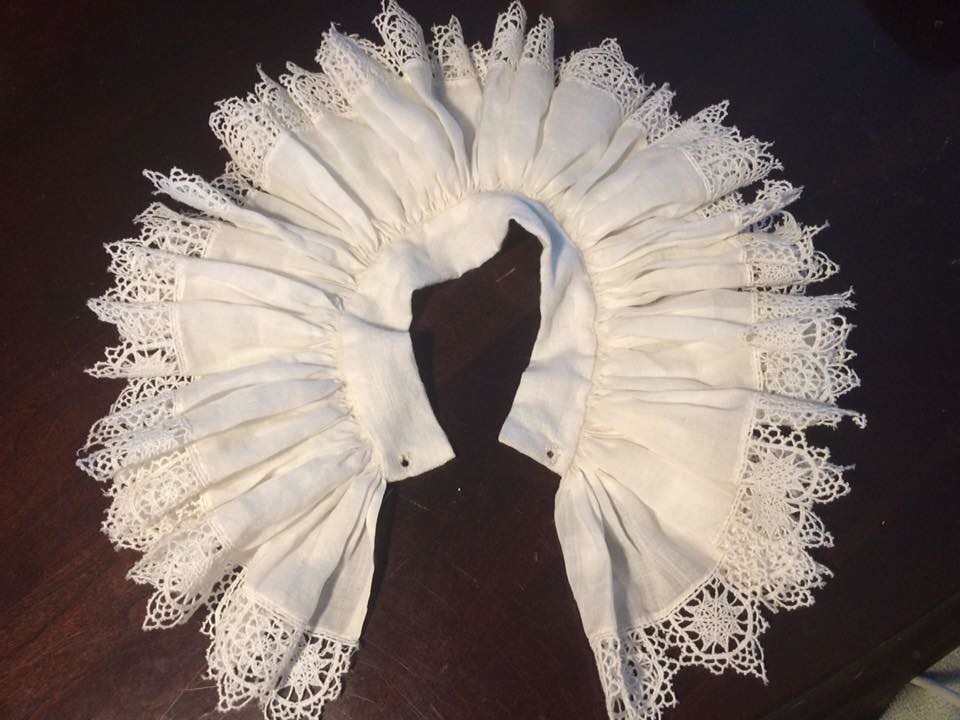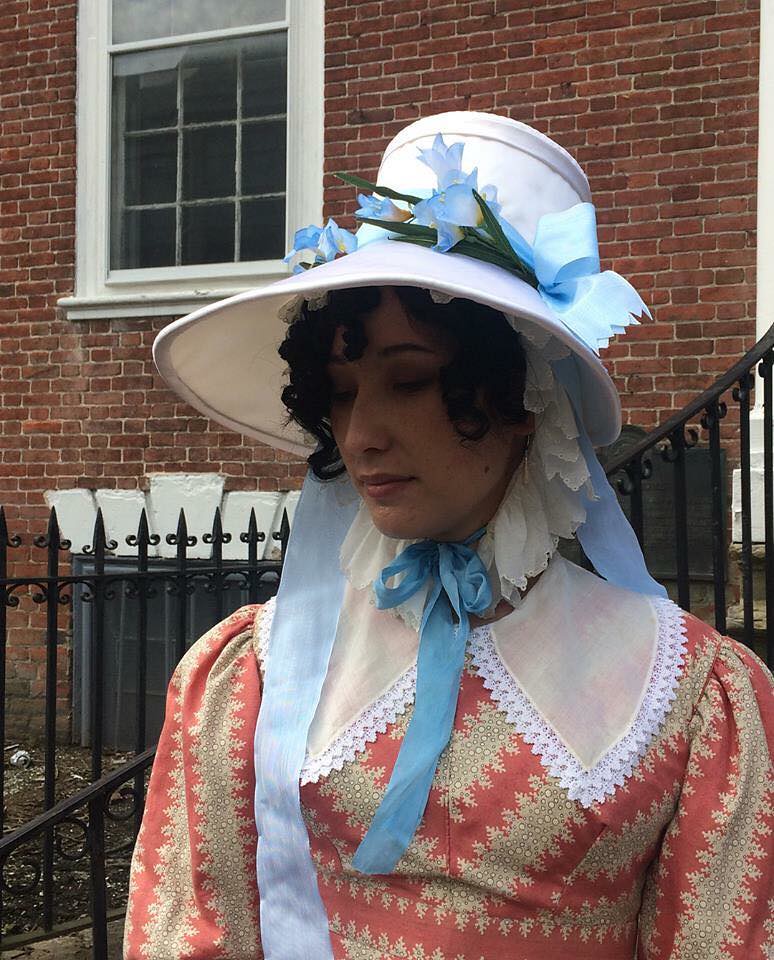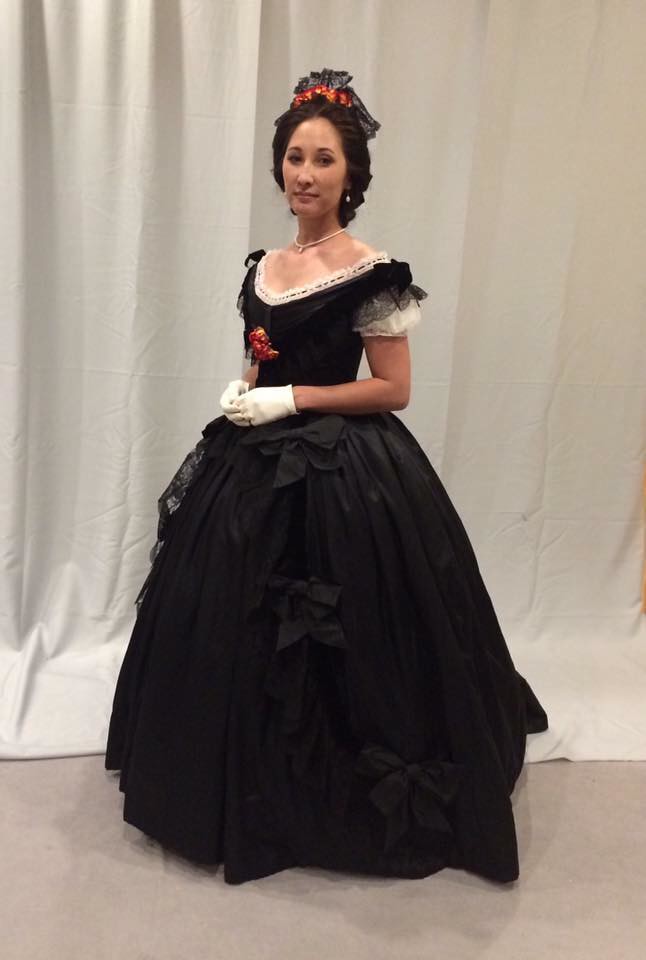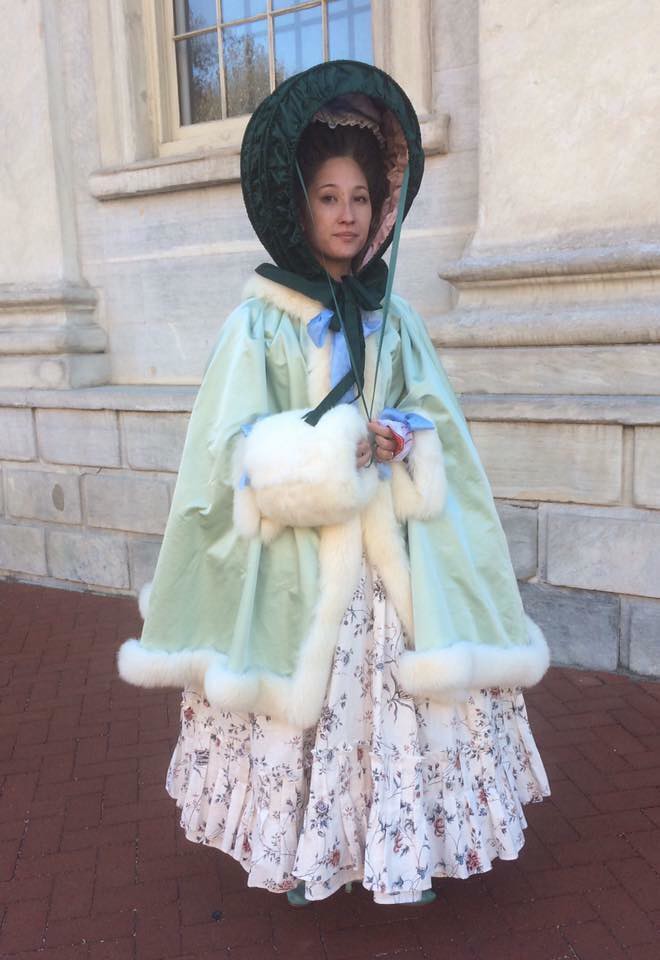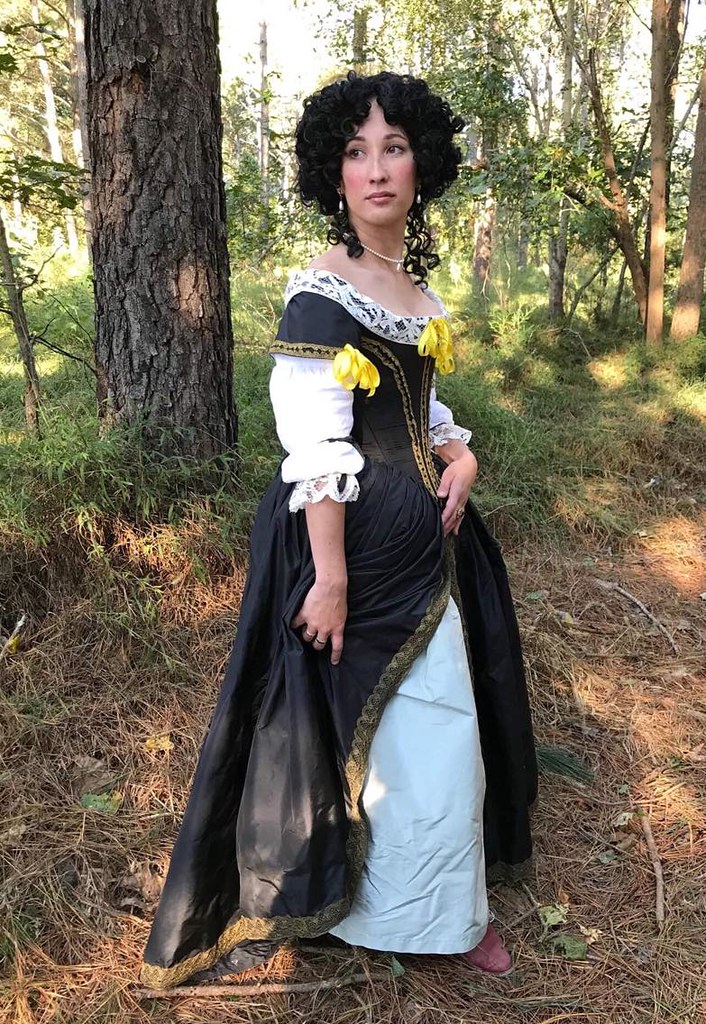I have been wanting to make a new early 17th century gown for some time, one that would demonstrate more of what I’ve learned in the past few years. I also wanted a posher gown than the one I had made previously. I also had recently done research into the 1620-24 entries of the Ferrar Papers, which provided documentation for women’s gowns being worn in Virginia.
With that in mind, I began looking for black worsted wool, which would be a solidly “nice” fabric for a woman of comfortable means but by no means wealthy. Worsteds, being lightweight and smooth, became increasingly popular from the middle of the 16th century for better garments. Black was a color that showed sobriety but also fashion sense. Obtaining a “true black”—not blue-black or natural sheep’s black—was an costly process compared to other colors (like red shades from madder or blue shades from woad) so black garments also showed the money invested in the material.
For trim, I found a vintage wool lace that I dyed black. The last thing to source was the black glass buttons—actually manufactured for teddy bear eyes but made in a similar way to glass buttons from this period; that is, a wire shank inserted into the glass.
Studying period images led me to choose a “high-bodied” gown, a term used in original sources most likely to denote a gown with a bodice made high up to the neck with a color as opposed to a low, rounded neckline. You can see my Pinterest board of images by clicking on the picture.
Two gowns of this style are in Patterns of Fashion, but there is very little construction information given. None of the newer publications on 17th century dress have anything like them either. I decided to base the construction of the gown on the information in Patterns of Fashion on the woman’s doublet and on doublets examined in Seventeenth Century Men’s Dress Patterns. Since tailors we’re making women’s gowns during this time, I feel it’s safe to assume that women’s gowns would have been made using similar techniques.
The bodice is interlined with two layers of linen canvas and boned with synthetic whalebone. While boning in pairs of bodies and the bodices and sleeves of gowns had been the preserve of the elite at the end of the 16th century, it had begun to trickle down the social scale by the first quarter of the 17th century. A 1611 ordinance for the City of London actually forbade maid servants from having whalebone in their clothing, which encourages me to believe enough of them had done it for it to be considered a problem (the problem, of course, being dressing in a manner considered inappropriate for their station). And since this gown is for a woman who would have employed servants, it seemed reasonable to have boning in the bodice. I used a similar layout for the boning that is seen in the woman's doublet in Patterns of Fashion.
The outer layer of worsted was put together with the interlining. I whipped the seam allowances down to keep everything neat. The center front edges of the bodice are faced with black silk taffeta, as are the cuffs of the sleeves. The buttonholes are worked in silk buttonhole twist.
The tabs that make up the wings were each made separately, consisting of the worsted wool folded over a piece of linen canvas and trimmed with the wool lace. The tabs are mounted onto a single piece of taffeta and then the tabs are bar-tacked together to further keep them in place.
Next the lining goes in. First I laid in the back lining and then the fronts were laid on top and the seam allowances felled down at the side backs and shoulders. The lining was also felled down along the facings. Finally the black silk taffeta collar lining went in, again using a felling stitch.
To bulk up the skirt pleats just a bit, I put a strip of wool coating along the top edge if the skirt and folded over the excess fabric. The skirt is gauged (cartridge pleated) to the finished waist edge of the bodice.
A crisp white linen ruff, cuffs, and coif finish the outfit along with a black fur felt hat blocked by my husband. While this looks like the stereotypical garb of a Thanksgiving Pilgrim, it’s something that could have been worn by any Englishwoman of moderate means regardless of religious leanings.
Back in October, I used this gown to do an historical witch photoshoot, which was incredibly fun!







































